Pallet Changing Machine: How to Preserve Cold Chain During Pallet Swaps?
Keeping products at a consistent, cold temperature is a major challenge in the supply chain. You can have the best refrigerated trucks and storage facilities in the world, but there's a critical weak point: the pallet swap. Maybe a pallet is damaged in transit, or you need to switch from a wooden shipping pallet to a clean, in-house plastic one. This moment of transfer is filled with risk. Manually restacking boxes in a chilled environment is slow, exposes products to warmer air, and invites human error that can lead to damaged goods or, even worse, a complete loss of an entire shipment. It’s a moment of high pressure where profits can literally melt away.
A pallet changing machine preserves the cold chain by making the pallet swap process incredibly fast and contained. Instead of taking 20-30 minutes for manual restacking, a pallet changer can swap a pallet in about 60 seconds. This machine securely clamps the entire product load, then tilts or inverts it, allowing the old pallet to be removed and a new one to be placed. Because this process is so quick and the load remains consolidated, the product’s exposure to ambient temperatures is minimized, effectively protecting the cold chain from being broken.
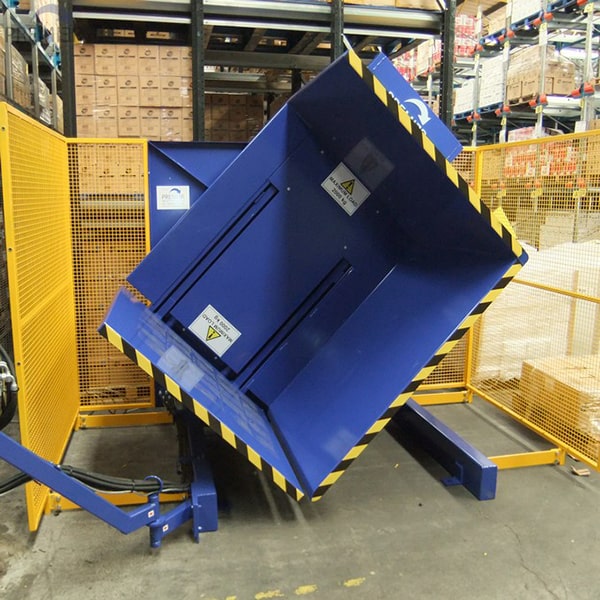
I've seen firsthand how this single point of failure can disrupt an entire operation. The theory of maintaining the cold chain is simple, but the practice is what separates successful companies from those who suffer constant losses. It’s not just about having the right equipment; it’s about understanding the specific risks and how the right machine can solve them. So, let's break down exactly how this technology works and what you should consider for your own operations.
What are the biggest risks to the cold chain during pallet transfers?
You have a pallet of temperature-sensitive goods that needs to be moved to a different pallet. It sounds like a simple task. But the common solution, manual restacking, is where things go wrong. It’s slow, it’s clumsy, and it introduces a cascade of risks that can compromise your entire load. A team of workers has to handle each box, exposing them to temperature changes, potential drops, and contamination. Understanding these specific dangers is the first step toward finding a real, reliable solution.
The biggest risks to the cold chain during pallet transfers are temperature excursion from prolonged exposure to ambient air, physical damage to products from manual handling, and contamination from breaking a sterile or clean environment. Each of these risks represents a significant threat to product quality, safety, and your bottom line.
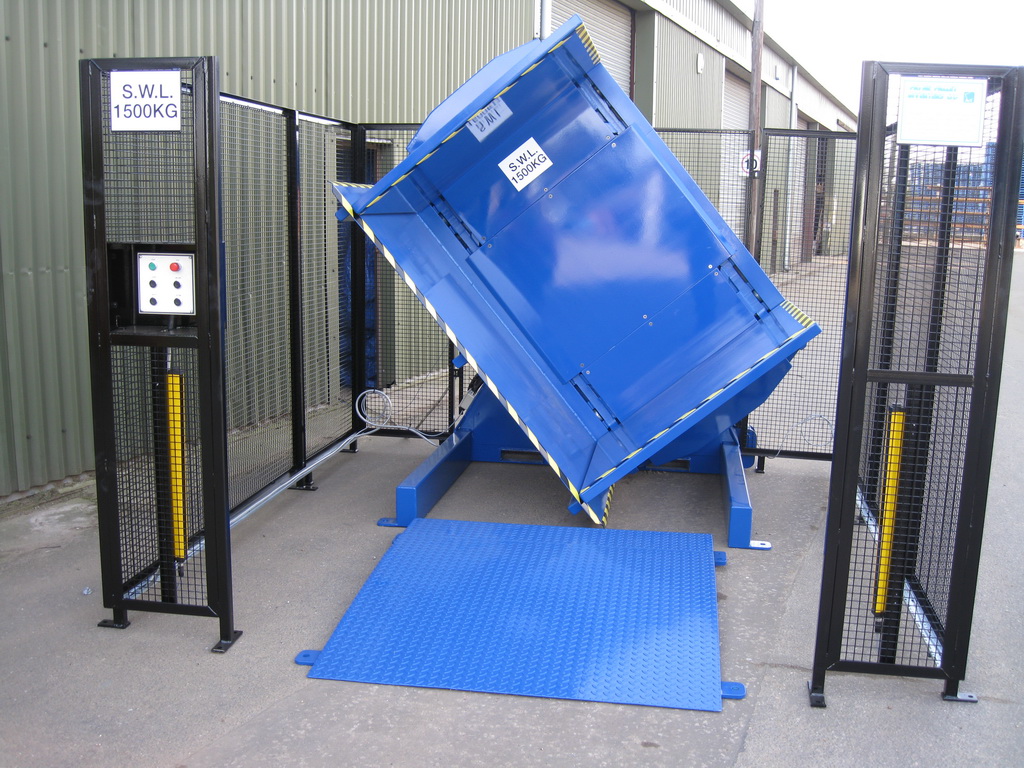
The Ticking Clock of Temperature
Every second that a temperature-sensitive product spends outside its ideal temperature range matters. This is often called "Time Out of Refrigeration" or TOR. When you manually restack a pallet, the process can easily take 20 to 30 minutes. During this time, the doors to the cold storage area are often left open, causing the ambient temperature to rise and putting the products at risk. The surface temperature of the outer boxes begins to climb immediately, and this heat slowly penetrates the load. For some products, this is a disaster. Think about ice cream, which can be ruined by even a slight thaw-and-refreeze cycle. Or consider vaccines, where a few degrees of deviation can render them completely ineffective. As an engineer, I think in terms of tolerances. In the cold chain, the tolerance for temperature change is incredibly small. Manual transfers push right past that tolerance. This isn't just a quality issue; it's a direct financial loss.
The High Cost of a Single Drop
Manual handling is inherently risky, especially in a cold environment. Workers are often wearing thick gloves, which reduces dexterity. The cold can cause muscle fatigue and slower reaction times. All it takes is one slip, one dropped box, to cause significant damage. If the product is fragile, like glass vials of medicine, a single drop can lead to a costly cleanup and product loss. If the product is food, a damaged package can be an entry point for bacteria. I once visited a food processing plant where a worker dropped a box of frozen pies. Not only were the pies ruined, but the damaged packaging meant the entire pallet had to be inspected for potential contamination, halting the shipping process for over an hour. This incident wasn't due to carelessness; it was a predictable outcome of a flawed, manual process. Relying on manual labor for such a critical task introduces a level of unpredictability that business leaders like Javier work hard to eliminate in every other part of their operation.
Breaching the Sterile Barrier
For the pharmaceutical, biotech, and high-end food industries, contamination is a non-negotiable failure. These products often exist in a clean or even sterile environment. When you bring in a team to manually restack a pallet, you introduce multiple potential sources of contamination. People bring in dust and microbes on their shoes and clothing. Wooden pallets, a common source of incoming shipments, can splinter and shed debris, wood dust, and even insects. The act of placing boxes on the floor, even for a moment, is a major breach of protocol in a cleanroom environment. A pallet changing machine, on the other hand, contains the process. The product never touches the floor. The transfer is done by a machine that can be easily cleaned and sanitized, ensuring the integrity of the clean environment. This is essential for meeting strict regulatory standards, like those from the FDA or other health authorities, and for maintaining the trust of your customers.
How does a pallet changing machine minimize temperature fluctuations?
You know you have a problem. You see the risks of manual handling and the open cold room doors. You're worried about products getting too warm during the pallet swap. Every minute that passes feels like money draining from your business. How can you stop this? A pallet changing machine is designed to solve this exact problem. It attacks the issue at its core by making the entire process fast, contained, and controlled.
A pallet changing machine minimizes temperature fluctuations primarily through speed and containment. By completing a pallet swap in as little as 60 seconds, it drastically reduces the product's exposure time to warmer ambient temperatures. This is a huge improvement over the 20-30 minutes required for manual restacking. The machine also keeps the load together, which helps it retain its core temperature.
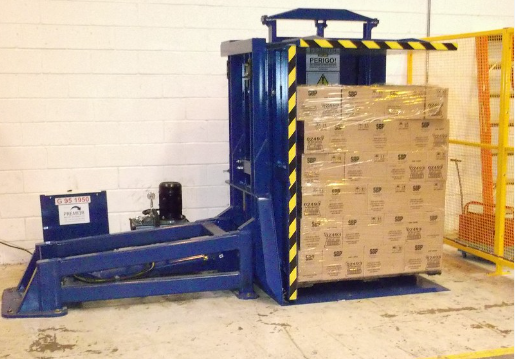
From Minutes to Seconds
The single most important factor in preserving the cold chain is time. Speed is everything. A manual pallet swap is a lengthy process. You need to assemble a team, move the pallet to a staging area, physically move every single box, and then wrap the new pallet. This can easily take half an hour. In contrast, a pallet changing machine automates the entire sequence. A forklift operator places the pallet into the machine, the operator presses a button, and the machine takes over. It clamps the load, inverts it 180 degrees, the operator swaps the pallets, and the machine returns the load to its upright position. The whole cycle is often completed in 60 to 90 seconds. I remember a client who handled frozen seafood. They were losing a significant percentage of their product to surface thawing during manual restacking. After we installed a pallet inverter, they used a temperature probe to check the difference. The temperature change on the surface of the boxes was reduced by over 90%. They went from a critical operational failure to a smooth, reliable process. This speed doesn't just protect the product; it dramatically increases throughput, directly addressing goals like improving capacity utilization.
Creating a Micro-Environment
Containment is the second key principle. When you manually restack, the products are separated and surrounded by ambient air. This allows heat to attack each box individually. A pallet changer, however, treats the entire pallet load as a single unit. The products stay tightly packed together. The machine’s clamping platforms press against the top and bottom of the load, effectively creating a "micro-environment." This minimizes airflow around the individual boxes and helps the entire load retain its cold thermal mass. The products in the center of the pallet are almost completely shielded from any temperature change. Furthermore, these machines can be installed in clever ways to maximize protection. I have designed systems where the pallet changer is built directly into the wall of a cold storage facility. The forklift on the "warm" side places the pallet in, and the machine transfers the load to a new pallet on the "cold" side. The product itself never leaves the refrigerated zone.
Less Movement, More Stability
An automated process means less human and forklift traffic in and out of the cold storage area. Every time the door to a freezer or cooler opens, cold air rushes out and warm, moist air rushes in. This forces the refrigeration system to work harder, consuming more energy. This is a direct hit to your operational costs, a key challenge for any large-scale facility. By automating the pallet swap, you reduce the need for workers to constantly enter and exit the cold zone. The main doors stay closed for longer periods, leading to a more stable internal temperature and significant energy savings. This directly addresses the challenge of fluctuating energy costs. It's a simple cause-and-effect relationship: less door opening time equals lower electricity bills. This makes the pallet changer not just a piece of material handling equipment, but an energy-saving tool as well.
What features should I look for in a cold chain-specific pallet changer?
At first glance, many pallet changers might seem to do the same basic job. They all swap pallets. But if you're working in a cold chain environment, the details are what matter. Choosing a standard machine for a cold, wet application is a recipe for failure. It can lead to rust, mechanical breakdowns, and the very product contamination you were trying to prevent. To make a smart investment, you need to know exactly what features to look for that are designed specifically for the rigors of a cold chain operation.
For cold chain applications, you must look for a pallet changer built from materials that resist corrosion, like stainless steel or a hot-dip galvanized finish. It is also critical that the machine has components rated for low temperatures, including the hydraulic oil, electrical sensors, and motors. Finally, features like adjustable clamping pressure are essential to handle delicate, temperature-sensitive products without causing damage.
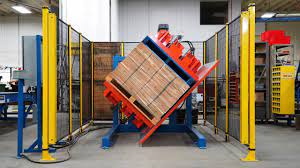
Built to Withstand the Cold
A standard pallet changer is typically made from painted carbon steel. In a normal, dry warehouse, this is perfectly fine. But in a cold storage facility, it's a major problem. Cold environments constantly cycle through temperature changes, which creates condensation. This moisture will quickly find any scratch or chip in the paint, and rust will begin to form. Rust not only compromises the structural integrity of the machine over time, but rust flakes can also fall off and contaminate your products. This is completely unacceptable in food or pharmaceutical applications. The right solution is a machine constructed from materials designed for wet environments.
- Stainless Steel: This is the premium choice. It does not rust and is very easy to clean and sanitize, making it ideal for the highest hygiene standards.
- Hot-Dip Galvanized Finish: This is a very robust and cost-effective alternative. The steel components are dipped in molten zinc, creating a thick, durable coating that provides excellent protection against corrosion.
A machine built with these materials addresses the challenge of aging equipment by ensuring a long, reliable service life, even in the harshest conditions.
Low-Temp Components
A machine is only as strong as its weakest part. In a cold environment, standard components can and will fail. You need to ensure the entire system is rated for low-temperature operation. Here are the key components to check:
| Component | Standard Version Issue | Cold-Rated Solution |
|---|---|---|
| Hydraulic Oil | Thickens in the cold, causing slow, sluggish operation and pump strain. | Special low-temperature hydraulic fluid that maintains its viscosity. |
| Electrical System | Wires and cables can become brittle. Standard sensors may malfunction. | Low-temp rated wiring and IP65-rated (or higher) enclosures to protect against moisture. |
| Bearings/Grease | Standard grease can freeze, causing bearings to seize and motors to burn out. | Special synthetic grease that does not solidify at low temperatures. |
| Hoses | Standard rubber hoses can become stiff and crack. | Hoses specifically designed for cold flexibility and durability. |
Insisting on these cold-rated components is part of the due diligence that a detail-oriented leader would perform. It's about ensuring production stability and getting the return on investment you expect.
Gentle but Firm Control
Cold chain products are often delicate. A box of pharmaceutical vials cannot be crushed. A pallet of fresh berries can't be squeezed. At the same time, the machine needs to apply enough force to securely hold a heavy load during inversion. The solution is adjustable clamping pressure. A modern, high-quality pallet changer allows you to set the pressure based on the product you are handling. The best systems use proportional hydraulic valves and sensors to apply a gentle, consistent pressure, regardless of the load's size or weight. Some advanced machines even have sensors that can automatically detect the height of the load and apply a pre-programmed pressure setting. This level of technological sophistication ensures that you can handle a wide variety of products safely and effectively, protecting your assets and maintaining quality.
How can integrating a pallet changer improve overall warehouse efficiency and safety?
You might look at a pallet changer and see a machine that performs one simple task. It's easy to view it as just another piece of equipment, a cost on a balance sheet. But this perspective misses the bigger picture. When you think like an engineer and look at your entire warehouse as a system, you see that a pallet changer is not an isolated tool. It's a key that can unlock significant improvements across your entire operation. Integrating this machine correctly can resolve hidden bottlenecks, transform worker safety, and directly contribute to your highest-level business goals.
Integrating a pallet changer improves overall warehouse efficiency by automating a slow, manual bottleneck. This increases throughput, reduces labor costs, and frees up your team for more valuable tasks. It also dramatically enhances safety by eliminating the dangerous ergonomic risks of manual lifting and restacking, which leads to fewer worker injuries and a more stable workforce.
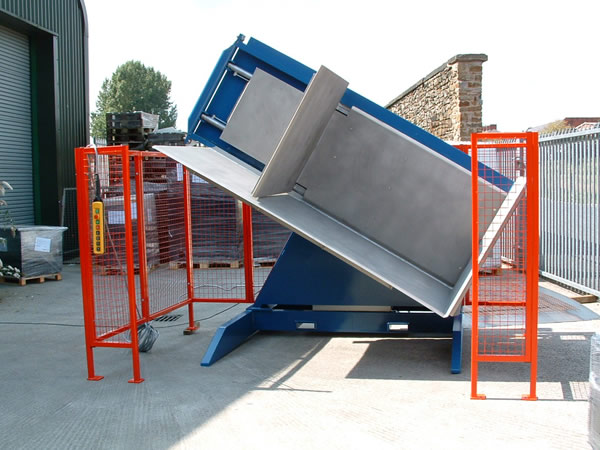
Unlocking Your Throughput Potential
In almost every warehouse I have analyzed, the receiving dock is a potential bottleneck. A single truck arrives with 20 pallets that need to be unloaded, inspected, and put away. If all those pallets need to be swapped, your entire receiving process can grind to a halt. A team of two or three workers might spend hours just dealing with that one truckload. By automating this step with a pallet changer, you turn a 30-minute task into a 1-minute task. This has a powerful ripple effect. Forklifts aren't waiting around. Product gets moved into storage or production faster. Your receiving docks are cleared for the next truck. This directly boosts your facility's throughput and capacity utilization. I worked with a client in the steel wire industry, an industry you know well, Javier. They had a bottleneck in their packaging line where coils were manually transferred. While it wasn't a cold chain, the principle was identical. By automating that one slow step, the entire line's output increased by 15%. This is the power of identifying and fixing the weakest link in your process chain.
A Healthier, Safer Workforce
As a business owner, you know that your people are your most valuable asset. But manual restacking is one of the most physically demanding and dangerous jobs in a warehouse. It's a primary cause of musculoskeletal injuries, particularly to the back and shoulders. These injuries are even more common in cold environments, where muscles are tighter and less flexible. The costs of these injuries are enormous. They include medical expenses, increased insurance premiums, lost productivity, and the cost of hiring and training replacements. A pallet changer eliminates this risk entirely. The machine does all the heavy lifting. This creates a safer work environment, improves employee morale, and reduces the hidden costs associated with workplace injuries. A safer operation is a more efficient and profitable operation. This aligns with the goal of reducing overall operational costs while prioritizing the well-being of your team.
A More Organized Warehouse
A pallet changer gives you control over the pallets in your facility. You are no longer forced to accept whatever quality of pallet comes in on a truck. You can immediately transfer goods from dirty, splintered wood pallets to your own high-quality, standardized pallets. This has several benefits. First, it improves hygiene by keeping wood debris, pests, and other contaminants out of your clean production and storage areas. This is crucial for meeting quality standards. Second, using standardized pallets (like plastic or metal) is often a requirement for advanced automation, such as Automated Storage and Retrieval Systems (AS/RS). By making it easy to switch to these pallets, a changer becomes a key enabler for your future digitalization and automation projects. It helps you create a more organized, cleaner, and efficient warehouse that is ready for the next generation of technology.
My Insights
As an engineer who has spent his entire career in the packing machine industry—first on the factory floor and now as the owner of my own company—I want to offer a perspective that goes beyond the technical specifications. When I speak with leaders like you, Javier, I see that you aren't just buying a machine. You are investing in stability, predictability, and growth.
You built a 2 million-ton steel mill by being pragmatic and forward-thinking. You understand better than anyone that a single, unreliable point in a process can jeopardize the entire output. While your product is steel, not frozen food, the core principle of process integrity is exactly the same. A broken wooden pallet that needs to be manually restacked can be just as disruptive to your logistics as a faulty sensor on a production line. It's an unplanned stop that costs time and money.
Your goal to reduce overall operational costs by 8% is ambitious, and it requires looking at every part of your business. A pallet changing machine contributes directly to this. The savings are not just in reassigning the labor of two or three workers. The real ROI comes from preventing product loss, reducing energy waste from constantly opening cold storage doors—which directly addresses your challenge with energy costs—and eliminating the significant expenses tied to workplace injuries.
Most importantly, you are looking for a strategic partner, not just a supplier. That philosophy resonates deeply with me. When I started SHJLPACK, I built my success on the foundation of strong partnerships with clients and suppliers who understood my business goals. That is the mission I carry forward today. We don't just sell you a piece of equipment. We look at your entire workflow, from the moment a truck arrives to the moment your product ships out. We aim to provide a total solution, showing you how one smart investment can be a catalyst for the broader efficiency gains, digitalization, and cost reductions you are striving to achieve.
Conclusion
A pallet changing machine is more than a convenience; it's a strategic tool for any business serious about preserving the cold chain, improving operational efficiency, and creating a safer workplace.




